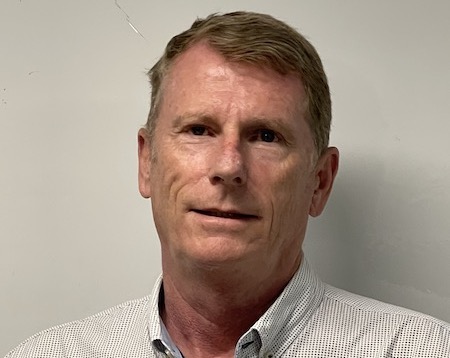Featured News
Newsroom
Solaray reports post-election solar PV sales surge as inquiries double and storage hits record highs
- Details
- In Enphase Energy
- /
 Solaray director and co-founder Jonathan Fisk
Solaray director and co-founder Jonathan Fisk
Within days of the Australian Federal election, Sydney-based Solaray Energy saw solar photovoltaic (PV) system inquiries double with one in two new customers ordering batteries with their solar panels.
After first-quarter sales cruelled by Omicron, summer floods and the impending election campaign, Solaray’s recent solar sales have rebounded to levels closer to the record demand of 2020 and 2021.
Solaray, a five-time Enphase installer of the year that has installed more than 75,000 Enphase microinverters in Australia, is active in the premium end of the NSW residential solar market.
Solaray director and co-founder Jonathan Fisk attributed the rebound in the solar market to the election delivering a pro-renewable energy parliament and surging energy prices. “In the second half of May, our inquiries jumped by close to 100 per cent,” he said.
- Details
- In Enphase Energy
- /
MELBOURNE, Australia, June 6, 2022 — Enphase Energy, Inc. (NASDAQ: ENPH), a global energy technology company and the world's leading supplier of microinverter-based solar and battery systems, announced today that a growing number of Australian solar installers are now exclusively offering Enphase® products, as increased solar safety regulations and compliance standards come into effect across the country.
In May 2022, AS/NZS5033:2021, an update to installation and safety requirements for photovoltaic (PV) arrays, came into effect nationwide in Australia. The revised regulations aim to support solar installers in meeting compliance requirements and promoting consumer and electrical contractor safety. The standard details new compliance measures for direct current (DC) central (“string”) inverter-based solar systems, including restrictive cable runs, IEC 62930 compliant DC cable, and high visibility DC voltage and warning signs. In contrast, alternating current (AC) decentralized inverter-based solar systems operating at extra-low voltage, such as installations with Enphase microinverters, are exempt from most new regulations. As a result, some Australian solar installers are exclusively leveraging Enphase technology to help insulate their businesses and customers from electrical risk and future regulatory changes.
- Details
- In Enphase Energy
- /
 Enphase Energy General Manager ANZ & Pacific Wilf Johnston Enphase Energy has called on Australia’s new Government to convene a renewable energy summit that can align national resources for a more coordinated drive to achieve carbon net-zero.
Enphase Energy General Manager ANZ & Pacific Wilf Johnston Enphase Energy has called on Australia’s new Government to convene a renewable energy summit that can align national resources for a more coordinated drive to achieve carbon net-zero.
After Saturday’s Federal election elected a new parliament overwhelmingly committed to more aggressive action on climate change, Australia needs to harness all its resources to focus on accelerating the nation’s transition to a low-cost renewable energy economy.
Enphase Energy General Manager ANZ & Pacific Wilf Johnston said Australia could reap enormous economic benefits from getting all parties involved in the renewable energy sector into one room. “Bob Hawke did this successfully with the National Economic Summit in 1983,” he said.
- Details
- In Enphase Energy
- /
 Solaray Energy director Jonathan Fisk Sydney-based Solaray Energy believes its Australian record of installing more than 75,000 Enphase microinverters on solar panels provides a path for solar-enabling Australia’s “stressed” electricity grid.
Solaray Energy director Jonathan Fisk Sydney-based Solaray Energy believes its Australian record of installing more than 75,000 Enphase microinverters on solar panels provides a path for solar-enabling Australia’s “stressed” electricity grid.
In a global announcement, Enphase Energy reports that Solaray is its only Australian partner to have installed more than 75,000 Enphase microinverters since 2014 - most of them in the past three years. Three other Enphase partners were recognised for having installed more than 25,000 microinverters.
Solaray estimates that with each microinverter installed on an average 300-watt panel, they have a collective energy generation capacity of 22.5 megawatts (MW) – capable of producing 32.8 gigawatt-hours (GW-h) of energy annually - enough to power more than 5200 average Australian homes *.
Solaray Energy director Jonathan Fisk said the big problem with rooftop-generated solar energy was that the electricity grid was not designed for it. “The grid was designed to distribute electricity generated by large, centralised power stations,” he said.
More News...
- With Qantas pilot on board, Melbourne’s Jet Solar soars from solar demand during lockdown boom (04 April 2022)
- East coast floods highlight the need for Australia to mandate rapid shutdown for safer solar systems (21 March 2022)
- MIMP delivers affordable gigabit-speed Internet services for businesses in Whyalla and Mount Gambier (28 March 2022)
- Horses are Better than Unicorns says Ecommerce entrepreneur Brad Moran (28 February 2022)
- Underwriters Laboratories Selects Redflow for Flow Battery Research Program at Stress Engineering (24 February 2022)
- Adelaide skills-building centre unveils volunteer auction to fund move into post-pandemic life (21 February 2022)
- Enphase donates microinverters for $1.3M rebuild of Kangaroo Island hall destroyed by Black Summer bushfire (09 February 2022)
- Australian retailers risk missing rising wave of retail media spending in 2022 warns CitrusAd (07 February 2022)
- AI-powered workforce optimisation leader LIFELENZ raises US$32M to fund global growth (03 February 2022)
- Redflow completes 2 MWh installation in California (20 December 2021)
Off the Cuff

Simon Hackett speaks about Formula E racing on ABC Radio Adelaide
Australian renewable energy investor Simon Hackett last week spoke to Radio ABC Adelaide's Afternoons host Sonya Feldhoff about the benefits for replacing the cancelled Adelaide 500 motor race with a...
Read more
Seven simple steps for mental health in time of coronavirus
After the summer bushfires, the coronavirus pandemic and associated economic shutdown, “unprecedented” must be a standout favourite for Macquarie Dictionary’s Word of the Year for 2020. For the first time...
Read more
John Harris talks (a bit) about International Albinism Awareness Day on ABC Radio
John Harris, who has the honorary role of PR guy for the Albinism Fellowship of Australia, was interviewed by Peter Goers on the Evenings show of ABC Radio Adelaide on...
Read more
Start-ups are key to the future of everything
Nigel Lake, Executive Chair of global business advisory firm Pottinger, will tell this week's Myriad start-ups festival in Brisbane, running May 16-19, that Australia needs start-ups to protect its prosperity. Pottinger...
Read moreContact
Impress Media Australia
P: +61 8 8431 4000
E: john@impress.com.au
W: www.impress.com.au
Street:
Impress Media Australia
313 Portrush Road,
Norwood SA 5067
Click here for our location
Postal:
Impress Media Australia
Box 95, Kensington Park
South Australia 5068







